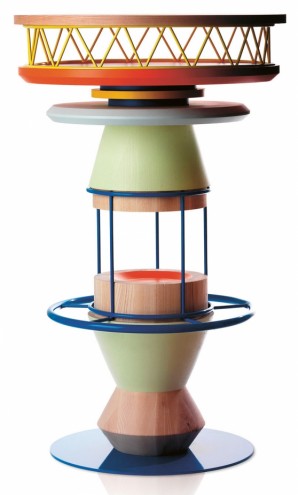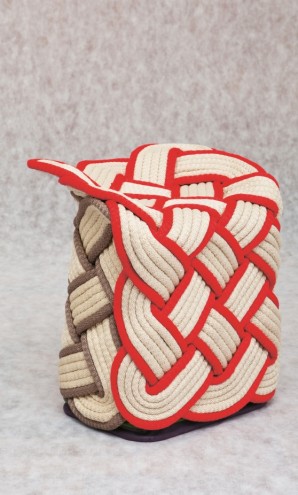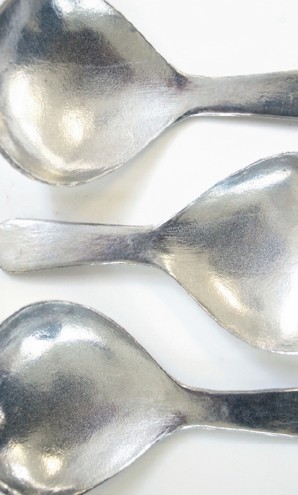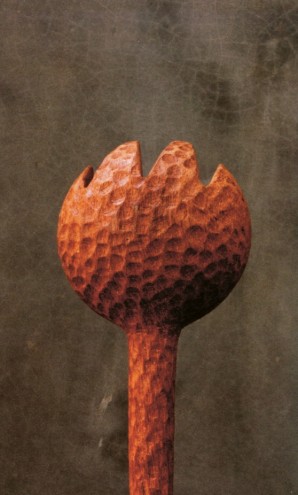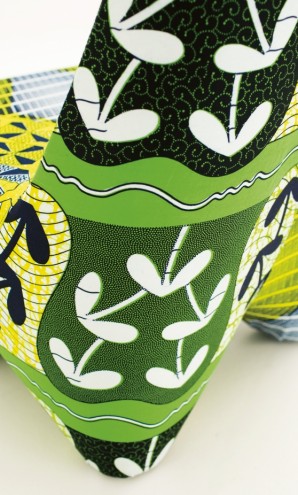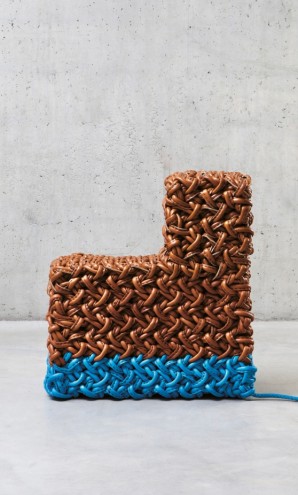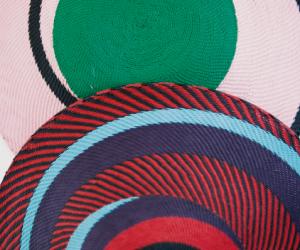Part of the Project
Over the past few months, small signs have emerged that show a renewed interest in the Memphis design movement. It seems this revival with a taste for bolder colours is already influencing the most avant-garde designers. The Italian master Ettore Sottsass would have agreed: “Memphis,” he said, “is everywhere and for everyone.” Yet he is also known for saying that Memphis was “like a hard drug” and therefore one couldn’t take too much of it.
The hunch I have about the revival of a Memphis style is fired by the colours used by Scholten & Baijings and the humorous masks by Bertjan Pot, as well as a chance encounter I had at London Design Week with a brand called Rebay – they simply layer coloured glass plates and bowls in a wonderful homage to the Memphis movement.
Sottsass founded Memphis in December 1981 and named it after a song by Bob Dylan. The desire was to break with modernism’s industrial functionalism and the Italian way of glamorous and pompous design. The group included Alessandro Mendini, Andrea Branzi, Michele de Lucchi, Matteo Thun, Shiro Kurumata, Michael Graves, Javier Mariscal and many other designers from different countries. They wanted to create decorative arts and therefore combined Art Deco inspirations with pop art, street art and kitchen kitsch from the 1950s. They set themselves free with colourful and patterned laminates, historical forms, wild animal materials, printed glass, loud celluloid, neon tubes and metal plates finished with spangles and glitter. They revindicated the fact that design was not for eternity and could be just for fun, adhering to the principles of pop art. The colourful furniture was sensational and considered bizarre, once even described as a blend of Bauhaus and Fisher-Price.
The movement coincided with the reign of disco-dancing when pop icons like Grace Jones dressed and moved like Memphis in loud colour- blocked outfits (which have already made a fashion comeback). Jones was photographed by her then-lover, the graphic artist Jean-Paul Goude, in graphic style, cutting up her length and limbs to become a totem of desire.
During the 1980s, South Africa was still struggling with apartheid and it was only in 1994 that the country became the democratic nation we now know and love. Straight after the end of apartheid, young designers and decorators of the country set out to create a South African style mixing contemporary, folkloric and iconic African elements such as spears, zebra stripes, wooden masks and African stools. Bars, restaurants and early boutique hotels invented this first funky South African design language. But that movement was quickly saturated and the design community turned to arts, crafts and textiles instead. These trends developed in a great outpouring of rustic and organic style, including architecture, design and food, which celebrated the well-being of South African life.
Now these long-lasting trends can gain inspiration from new ideas working with colour, craft and pattern, liberating themselves in much the same way that Memphis did. Working on my forecasts for 2014 and beyond, it became clear to me that there is a kinship between the Memphis ideas and South African style, between shantytown colours and Italian kitchen laminates from that period. The use of tactile matter, coloured patterns, animal skins, fringes and finishes, light bulbs and neons, are all reason to believe we can expect an Eighties-inspired revival of some magnitude.
What makes this movement so African in feeling?
I believe the stacking and layering of colour and materials delivers a totemic quality to the designs. One of the most iconic design objects ever is the Carlton Cabinet by Sottsass. It looks and acts like a totem with a strange African vibe, stretching out its arms to the world. Mendini’s vases are also totemic constructions with an African echo. I feel textiles will keep on talking, with wilder patterns, stronger colours and nobler fibres. Rugs, in particular, will make a comeback, acting as oversized art pieces for our floors. Nomadic influences will turn to transportable items such as tray tables, folding furniture, blankets and cushions. The idea of stacking, storing, building and constructing new African totems is emerging; the world is looking to Africa to be inspired – like slaves to the rhythm!*
• *also the title of Grace Jones’ seventh album (1985)
• See the exhibition at the Design Indaba Expo from 1 to 3 March, designindaba.com
• Follow Li’s trend forecasts at trendtablet.com

